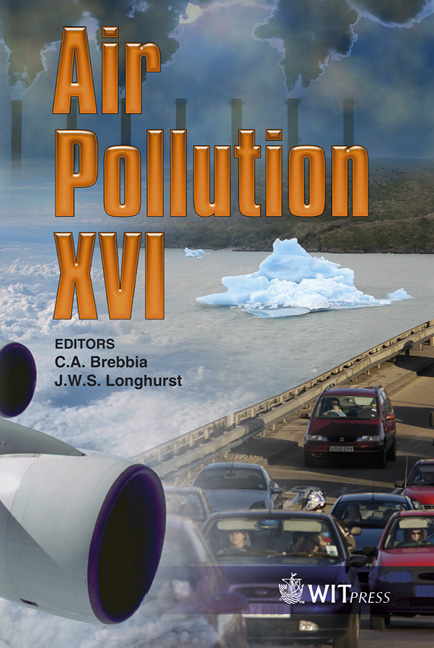Prediction Of Air Pollution Levels Using Neural Networks: Influence Of Spatial Variability
Price
Free (open access)
Transaction
Volume
116
Pages
9
Page Range
409 - 417
Published
2008
Size
1,369 kb
Paper DOI
10.2495/AIR080411
Copyright
WIT Press
Author(s)
G. Ibarra-Berastegi, A. Elias, A. Barona, J. Sáenz, A. Ezcurra & J. Diaz de Argandona
Abstract
This work focuses on the prediction of hourly levels up to 8 hours ahead for five pollutants (SO2, CO, NO2, NO and O3) and six locations in the area of Bilbao (Spain). To that end, 216 models based on neural networks (NN) have been built. Spatial variability for the five pollutants has been assessed using Principal Components Analysis and different behaviour has been detected for the nonreactive pollutant (SO2) and the rest (CO, NO2, NO and O3). This can be explained by the very local effects involved in the photochemical reactions. The inputs used to feed the NN models intended to predict forthcoming levels of these five pollutants, include a baseline based on autocorrelation plus a linear or nonlinear combination of different meteorological and traffic variables. The nature of these combinations is different depending on the sensor thus showing the importance of the spatial variability to build the models. The number of hourly cases, due to gaps in data predictions, can have a possible range from 11% to 38% depending on the sensor. Depending on the pollutant, location and number of hours ahead the prediction is made, different types of models have been selected. The use of these models based on NNs can provide Bilbao’s air pollution network originally designed for diagnosis purposes, with short-term, real time forecasting capabilities. The performance of these models at the different sensors in the area range from a maximum value of R2=0.88 for the prediction of NO2 1 hour ahead, to a minimum value of R2=0.15 for the prediction of ozone 8 hours ahead. These boundaries and the limitation in which the number of cases that predictions are possible represent the maximum forecasting capability that Bilbao’s network can provide in real-life operating conditions. Keywords: PCA, neural networks, fluid mechanics, air pollution forecasting, air quality network, traffic network, Bilbao, photochemistry, chemical engineering, applied physics.
Keywords
PCA, neural networks, fluid mechanics, air pollution forecasting, air quality network, traffic network, Bilbao, photochemistry, chemical engineering, applied physics.





